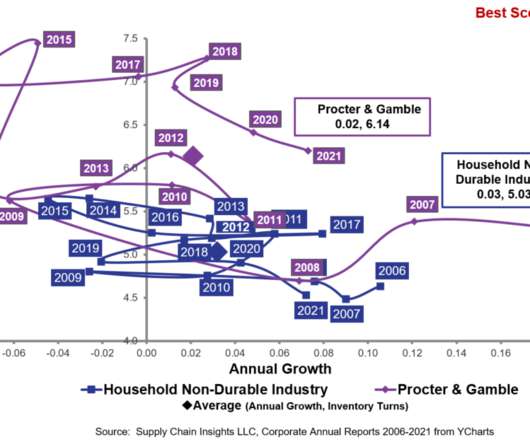Measuring Up?
Supply Chain Shaman
MARCH 28, 2016
The average manufacturing company’s supply chain organization is 15 years old. To help, in this post, we provide you with some insights for the period of 2006-2015. The supply chain is a complex system with finite, and non-linear relationships between supply chain metrics that drive balance sheet results. Resiliency.
































Let's personalize your content